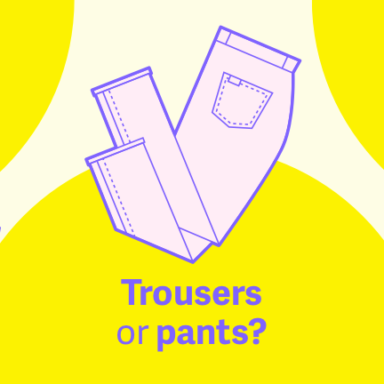Information hierarchy. What’s it all about?
Information hierarchy. Information design. They sound like intimidating things, right?
But in actual fact, used wisely, they’re the foundation for clear communications which save businesses millions. Attention piqued yet?
Information design: A dictionary definition
If you Googled its benefits, you’d find that ‘…good information design results in the clear and effective presentation of information. It combines skills in graphic design, writing, and human factors to make complex information easier to understand.’
The Information Design Association puts it another way:
“For information to have impact, it must be easy to find, simple to use, and instantly understandable.”
Information hierarchy is the structure that makes the details on the page so easy to follow. So far, so straightforward, right? So why aren’t more brands making the most of these opportunities?
Why do you need an information hierarchy?
These days, we’re faced with a veritable barrage of information. It invades our every moment through the letterbox. And on our televisions. Then our laptops, our smartphones, and in every other form of media. Even when you’re shopping for groceries or clothes — it’s endless.
When you’re drowning in a sea of information, the normal reaction is to switch off and block out the noise. But that’s exactly the last thing your company wants to see.
And here’s where mapping out a good information hierarchy becomes important. It helps us cope with information overload by presenting important details in a way that readers can absorb with as little effort as possible.
Think about your tax returns, they can be so absurdly impenetrable it feels like they really want you to run away to the Cayman Islands. And how about trying to wade through ever-updating Terms & Conditions? It’s not surprising that most of us simply click ‘accept’ without even reading them.
These less-than-exciting documents are the most important customer communications, but too often they’re the parts that suffer the most. They get left in the shadows because companies aren’t quite sure how to tackle them.
Not quite convinced yet? With poor communications costing businesses up to 40% of their annual budget, it’s not something you can ignore. We worked with HMRC on their tax reminders, using best practice design principles such as clear navigation, typographic hierarchy and effective language. The result? An extra £600 million in six weeks. And we saw 150,000 fewer cases passed to a third party debt collection agency. Not bad for a single document.
So how does it all work?
It’s a collaboration between clear, plain language and best-practice design.
It starts with a real interrogation of the brief. It’s important to nail some key objectives with assigned and measurable targets as these help position the project.
Understanding the proposition comes next and we do this with the end user in mind (not just the client). Consider the customer’s needs, priorities, experiences and expectations and use this as a way of teasing out new insights that we can use as part of the creative solution.
Then challenge everything.
Challenge the usual conventions of procedures. One of the things we hear a lot is ‘but we’ve always done it this way’. While processes can seem like an unmovable element at first, they’re often not.
Challenge the guidelines. Most brand books put above-the-line advertising first in mind. So, if you’re working on a below-the-line campaign, you may need to use your imagination.
What makes a good information hierarchy?
This is where the creatives come in. Our writers make your message easy to understand by creating that all-important information hierarchy. Then they set about breaking the key information down and eliminating unnecessary and repetitive information. They turn features into benefits and make calls-to-action clearer. Plus, a good writer will get to grips with complex regulatory content, and have the confidence to put it in plainer terms.
A case in point? We worked with Clydesdale Bank on the terms and conditions of their new banking app, B. Their fresh approach to finance needed a fresh approach to the fine print.
Meanwhile, the designers use all the tricks in their toolkit to make the complex simple. Things like routing, readability, structure, and use of color, graphics and fonts. Think of the information hierarchy as the invisible thread creating a logical flow through the communication. It directs the reader where you want them to go and directs their behavior, too.
Most people are time poor and rarely have more than a couple of minutes to review your communications. If you can do the hard work for them, you’re already a step ahead.
Making your information hierarchy stand up
As part-art, part-science and linked to measurable KPIs, great information design will help to boost ROI. So, there’s a direct and positive impact on your bottom line and your brand experience.
Design is a very subjective field. But this type of design, coupled with a clear information hierarchy, gives you an objective output that makes real business sense. By creating communications that have a clear purpose, a clear logic and a clear call-to-action, you’re delivering on your brand promise and eliminating those ‘pain points’ that can cost businesses — big time.
See how information design combines creativity and compliance and get inspired for your next project.















